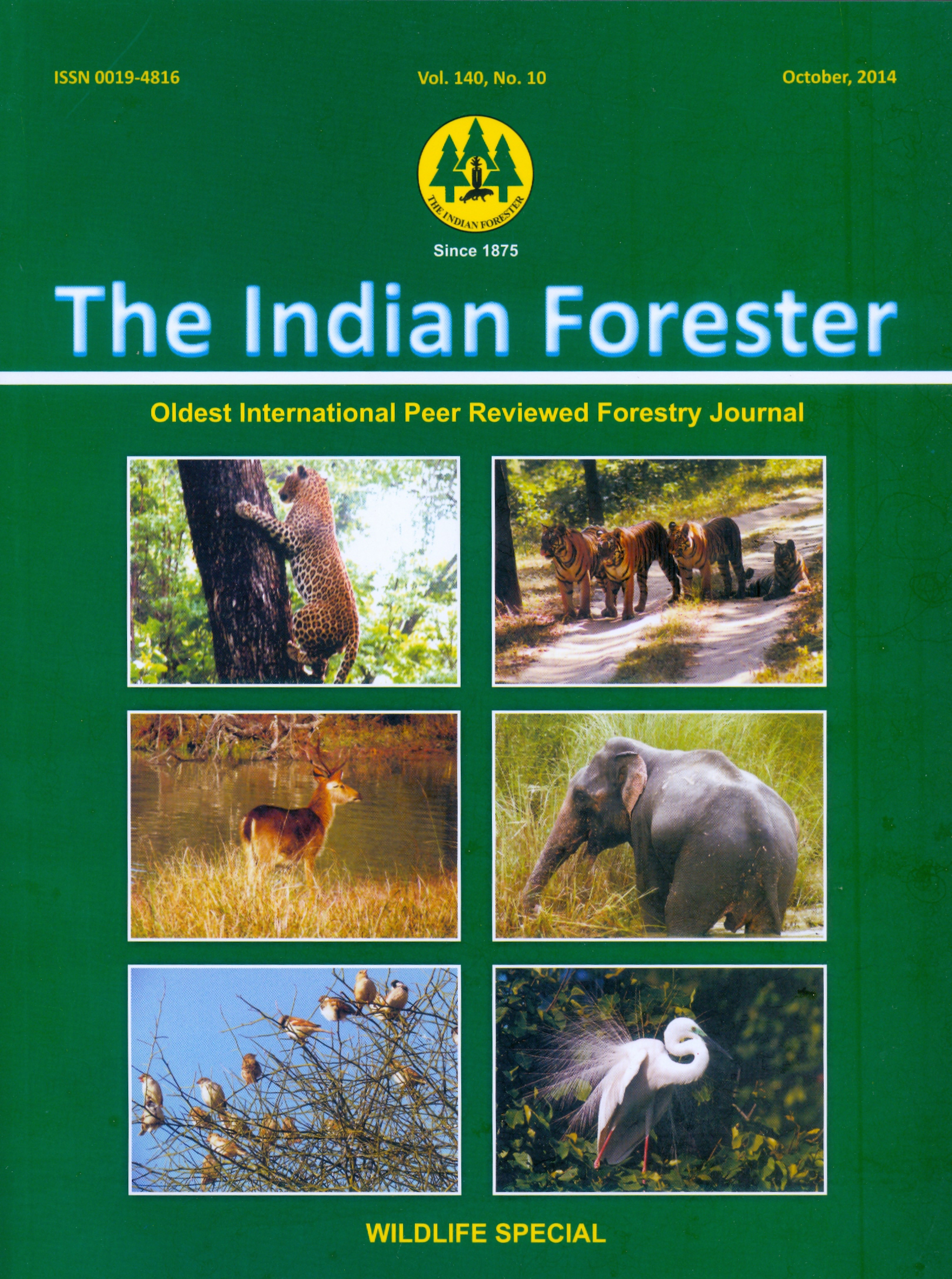Avifaunal Diversity of Ukkadam Lake in Coimbatore District of Tamilnadu (India)
DOI:
https://doi.org/10.36808/if/2014/v140i10/53475Keywords:
Wetland, Bird Diversity, Tamilnadu, Conservation, Avifaunal DiversityAbstract
Birds are excellent indicators of water quality and measures of biodiversity. The study on bird diversity was conducted during November 2012 to March 2013 at Ukkadam Lake, Coimbatore, Tamil Nadu. Total of 48 avifaunal species belonging to 20 families were recorded in the study area. The result showed that only one species was rare, one species was winter visitor, two species belong to nearly threatened category, two species critically endangered and forty species were under the least concerned category. Species diversity and species richness showed that more bird diversity occurred in the month of March followed by January and February and least in the month of November. Highest bird population was observed in the monthJanuary and FebruaryReferences
Ali S. and Ripley S.D. (1983). Hand Book of Birds of India and Pakistan. Oxford university press, Delhi, pp. 110–112.
Ali S. (2002). The Book of Indian Birds (13th Revised Edition). Oxford University Press, New Delhi, 326pp.
Colwell M.A. and Taft O.W. (2000). Water bird communites in managed wetlands of varying water depth. Water birds, 23: 1121-1133.
Fredrickson L.H. and Reid F.A. (1986). Riparian habitats: Non game management, over-view. Proceeding of 47th Midwest fish and wild life conference, 17 December 1985, Michigan, 60- 96
Grimmet R., Inskipp C. and Inskipp T. (1999). Pocket guide to the Birds of Indian Subcontinent. Oxford University Press, New Delhi. 384pp.
Hosetti B.B, Somanath B.C. and Naik K.L. (2001). Eco-ornithological studies on Gudavi Bird Sanctuary, Shimoga, Karnataka, India, cited. In: Trends in wild life biodiversity conservation and management (Eds.: B.B. Hosetti and M. Venkateshwarulu). Vol. 1, Daya Publishing House, Delhi. pp. 269-289.
Inac S., Gorucu O. and Pinar A.H. (2008). The bird species of Kumasir lake (Kahramanmaras-Turkey) and a view of environmental ethics on sustainable wetland management. J. Environ. Biol., 29, 411-414.
Ishwara Bhat K., Cristopher S.S., and Hosetti B.B. (2009). Avifaunal diversity of Anekere wetland, Karkala, Udupi district, Karnataka, India, J.Environ. Biol., 30 (6): 1059-1062.
Kazmierczak K. and Perlo B.V. (2000). A Field Guide to the Birds of the Indian Subcontinent. Yale Univer-sity Press, 352pp.
Kheraa N. Mehtaa V. and Sabatab B.C. (2009). Interrelationship of birds and habitat features in urban greenspaces in Delhi, India. Urban Forestry & urban greening, 8:187-196.
Narayana S. (2004). Status and ecology of the breeding wetland birds in the KTDC. Tourist complex, Kumarakom, Kerala. Sanjay G.S. (1993). An ecological study of birds at Kokkare Bellur. Final Report of the study sponsored by WWF-India, New Delhi.
Shanbhag A.B., Walia R. and Borges S.D. (2001). The impact of Konkan railway project on the avifauna of Carambolim lake in Goa. Zoos' Print J., 16: 503-508.
Shannon C.E. and Wiener (1949). The mathematical Theory of communication.Urbana University, Illinois press. pp. 117
Singh J.P. and Roy S.P. (1990). Some aspects of Ecology of birds of Kawar lake, Bihar. J. Fresh Water Biol., 2: 175-189.
Thompson L.S. (1981). Nest tree sharing by herons and cormorants in Montana. The Canadian Field Naturalist, 95: 257-260.
Shimoga and Uttangi J.C. (2001). Conservation and management for the waterfowls of minor irrigation tanks and their importance as stopover sites in Dharwad Dist., cited. In: Trends in wild life biodiversity conservation and management (Eds.: B.B. Hosetti and M.Venkateshwarulu). Vol. 1, Daya Publishing House, Delhi.
Vijayan V.S. (1986). On conserving the bird-fauna of Indian wetlands In: Proceeding of Indian Academy of sciences (Suppl.): 91-101.
Downloads
Downloads
How to Cite
Issue
Section
License
Unless otherwise stated, copyright or similar rights in all materials presented on the site, including graphical images, are owned by Indian Forester.





